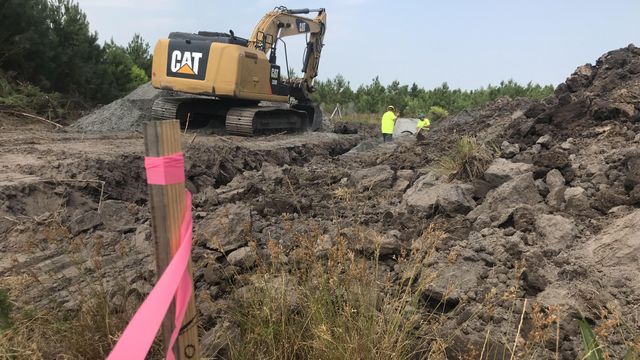20 years in the making: Carteret's North River Wetland Preserve is state's largest saltwater marsh restoration
Along the coast of North Carolina, there is a science project targeted at turning back time. The project by the North Carolina Coastal Federation aims to reclaim 6,000 farm acres back into marshland.
Posted — Updated“Everybody wants to gather a little closer,” said Bree Charron. “ We planted more than a million trees."
Charron is conducting a tour of media, environmentalists and volunteers through the North River Wetland Preserve in Carteret County - the largest saltwater marsh restoration in North Carolina.
The project has been ongoing for nearly 20 years. This summer, the final phase is underway.
Todd Miller, the executive director of the North Carolina Coastal Federation, has been working on the North River Wetlands Preserve project from the beginning.
“Well, it's a land area about the size of Morehead City,” he said. “It's situated right in the headwaters of some of the best estuaries we have on the East Coast of the United States.”
The area was marshland many years ago, then drained, cleared and made into farmland. The canals allowed rain, pesticides and farm chemicals to wash into the estuaries unfiltered. The project should improve the overall water quality in the area.
“Yeah, this is really putting it back as nature intended, and, in essence, putting the kidneys back in the system for the estuaries,” Miller said. “You have rainfall being filtered and contained and not running directly off polluting our waters.”
Miller says the difference between the farmland and marshland is dramatic.
“When we got rainfall, the water would leave this land and be in the estuary in two hours. Now, with the ditches plugged and the trees here, you're talking about months before that water seeps out in a much more natural way.”
The area is also becoming a haven for wildlife. More than 250 species of birds have been spotted on the property. And large mounds of dirt created while lowering the land give animals a high ground in case of flooding.
“This was a huge opportunity to really put some of nature's functions back in place,” Miller said. “You know, nice not to be working on a small scale, just postage stamp-type project. This is a landscape project that really will have a broad regional impact on the quality of our environment here in the Carteret County area.”
As Bree Charron's tour starts to wrap up, she touts numbers that are hard to imagine, “We're capturing over a billion gallons of water each year (in the reclaimed preserve).”
That's water that would have significantly altered the surrounding sounds and river.
“In a day and age when pretty much all the environmental news is pretty discouraging,” Miller said, “here we're seeing a real success and recovery story that is going to be here forever.”
The preserve is expected to open again to the public as the last phase of construction is completed in the late
Related Topics
• Credits
Copyright 2024 by Capitol Broadcasting Company. All rights reserved. This material may not be published, broadcast, rewritten or redistributed.





